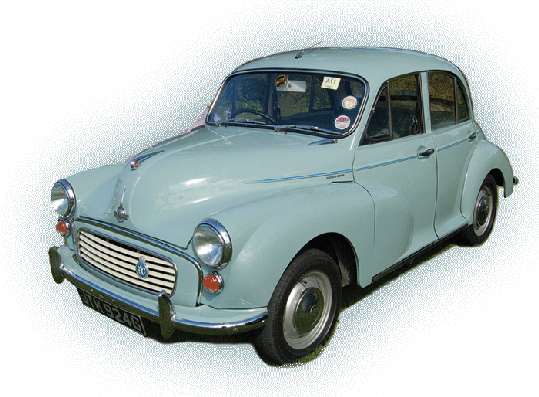Morris Minor/1000
The 'practical' classic
Heralded by many as the ultimate practical classic, the Morris Minor certainly makes a great deal of sense. Kim Henson takes a look at this much loved British classic.

AMAZINGLY, It's more than 60 years since the Morris Minor was introduced as a thoroughly modern small car. Replacing the Morris Eight Series E as the smallest model in the Morris line-up of family cars, the Minor arrived in 1948.
Inspired by (Sir) Alec Issigonis, the new car featured all-new bodywork, plus torsion bar front suspension and precise rack and pinion steering. The Minor handled exceptionally well compared with most other vehicles of its time, and the ride quality was excellent too.
It was not a fast car by today's standards (as it was still powered by the proven Morris Eight type sidevalve engine), but all the same gave commendable performance compared with other small cars of the era.

FACTS AND FIGURES:
Built: MM (sidevalve): 1948-52
• Series II (803cc ohv): 1952-56
• 1000: 1956-71
Bodywork: Two door saloon, four door
saloon, estate (Traveller), van, tourer
/convertible.
Engines: In-line four cylinder.
• MM (sidevalve): 918cc, 28 bhp
• Series II (overhead valve): 803cc, 30 bhp
• 1000 (overhead valve): 948cc, 37 bhp
• 1000 (overhead valve): 1098cc, 48 bhp
0-60 mph: Series II: 50+ sec • 1000
(948cc): 30 sec • 1000 (1098cc): 24 sec
Top speed: MM: 60+ mph • Series II: 62
mph • 1000 (948cc): 75+ mph • 1000
(1098cc): 80 mph
Typical fuel consumption: 35-45+ mpg
PRICES*:
(Note: These figures are approximate and
do not apply to 'concours' examples, which
may fetch considerably more)
Saloons/Travellers: Rough, £100. Good,
£1,200-£2,000. Top notch, £3,000+
Convertibles/commercials: Rough, £200.
Good, £1,500-£2,500. Top notch, £4,000+
Check for untoward rattlings from the 'bottom end' of the later engines too (948cc and 1098cc units), although these are far stronger and will typically run for at last 120,000 miles before major attention is due (given proper routine maintenance).
Check the gearbox for weak synchromesh action, jumping out of gear on the 'over-run' and for noisy first and reverse gears. The final drive units often whine a little at higher speeds (usually this is nothing to worry about), but loud clankings/bearing noises mean trouble.
Minors MUST have the front suspension/steering joints re-greased regularly (ideally very 1,000 miles or so), or the joints will suffer, and in the worst case scenario the suspension may actually collapse. Repairs are time-consuming and can be expensive.
VERDICT
Minors are excellent compact family classics; still among the easiest and most effective classic cars to
own and enjoy.
The main club catering for the cars is: The Morris Minor Owners' Club; www.morrisminoroc.co.uk
MMOC, P.O. Box 1098, Derby, DE23 8ZX Tel: 01332 291675 (8.30am - 3.00pm) Fax: 01332 290661
*Values estimated at September 2008.

Copyright Motopia © Contact Us